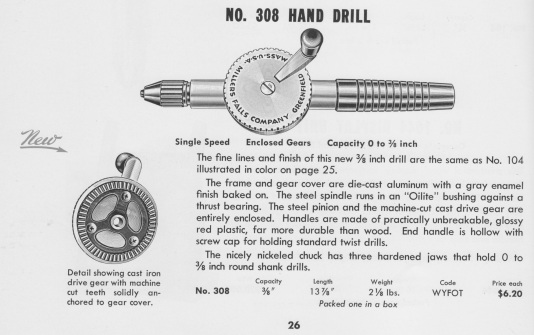“The BOSTON” is all that we know about this plane, apart from the “No.2” emblazoned on the toe of the plane, and the fact that it had a sibling – the No.2A, with a more conventional lever cap. What makes this plane weird *is* the lever cap. Again, little or no information on the net. As “THE BOSTON” appears on at least three planes, I would suspect it is the name of the company that manufactured these planes, but searching yields few results. The closest might be “THE BOSTON METALS COMPANY” – a company which was a member of the Drop Forging Association, at least up until the last 1950s.
The body is aluminum, painted blue on the inside. The aluminum block which retains the depth adjustment screw is coloured black, and there are black flakes on the lever cap and front knob, implying they were originally coloured black as well. The recessed part of the horn is likely designed to fit the portion of the hand between the index finger and the thumb, with the fingers wrapping around the right portion of the plane, and the thumb the left. Most of the plane is composed of cast aluminum excepting the screws (and associated threads), and thumbscrew. Other than the weird horn-like protrusion, the lever cap uses a traditional thumb-screw to apply tension to the blade.
Below are details for the base and depth adjustment mechanism – the latter which also doubles as the lateral adjustment mechanism. The depth adjustment mechanism works through a thumbscrew, which screws into a rectangular block, which pivots on the plane body (in the cylindrical depression shown in the top-left photograph below) – allowing for lateral adjustment.
SPECS:
Length: 6 7/8″
Width: 2″
Blade width: 1 5/8″
Weight: 550g (1 lb, 4 oz)
Material: cast aluminum
Markings: “THE BOSTON″, “No.2”
In addition it seems that “THE BOSTON” also created a small thumb-type block plane, also of cast aluminum.
NB: Other aluminum planes include one made by “Foster” (1 KINSEY BUFFALO NY).







































